
Tuyển tập Hội nghị Khoa học thường niên năm 2024. ISBN: 978-604-82-8175-5
541
EXPLORING LEARNER AUTONOMY: THE IMPACT OF
PADLET AS AN E-PORTFOLIO IN ENGLISH CLASSE
Nguyen Trong Kha
Thuyloi University, email: nguyentrongkha@tlu.edu.vn
1. INTRODUCTION
Technology has played a crucial role in
education, particularly in English language
teaching and learning, fundamentally
transforming instructional methods (Tran &
Duong, 2022; Tran & Ngo, 2020). Numerous
e-portfolio platforms, including Padlet, are
employed in educational institutions for
monitoring student progress, fostering self-
reflection, and supporting self-directed
learning (Hashemian & Fadaei, 2013). Padlet
is a platform that allows users to create
customizable digital walls for sharing posts,
videos, images, documents, and audio,
thereby enhancing the learning experience
and increasing student engagement.
Learner autonomy (LA) has garnered
significant attention from teachers, educators,
and researchers across diverse settings
(Balçikanli, 2010; Benson, 2006; Chan,
2003). Autonomy is defined as individuals'
desire to be the perceived origin or source of
their behavior (Deci & Ryan, 2002).
Learners’ autonomy, motivation, and
language acquisition are mutually linked.
Learning and acquiring foreign or second
languages heavily depend on motivation
(Anjomshoa & Sadighi, 2015; Dörnyei, 1990;
Gardner, 2001). Self-determination theory
(SDT), a prominent motivation theory,
highlights the role of behavioral self-
regulation and fundamental psychological
needs such as autonomy, relatedness, and
competence, which are essential for personal
integration and self-motivation (Ryan &
Deci, 2000). Basic Psychological Need
Theory (BPNT), a sub-theory of Self-
Determination Theory (SDT) introduced by
Ryan and Deci in 2017, posits that humans
possess essential psychological needs
essential for their optimal development,
motivation, and growth (Vansteenkiste et al.,
2020). One of the essentials is the need for
autonomy (Ryan & Deci, 2017). The
relationship between need satisfaction and
need frustration is fundamentally one-sided.
While low satisfaction of needs does not
always result in frustration, the presence of
frustration always indicates low satisfaction
of needs (Bartholomew et al., 2011). In
Vietnam, there remains a need for extensive
research on learner autonomy (Nguyen,
2016; Nguyen & Habok, 2020).
Drawing upon the contextual and
theoretical foundations mentioned above, this
study aims to investigate students’ autonomy
satisfaction and frustration when
experiencing Padlet as an e-portfolio
submission to answer the research question:
What are student perceptions of learner
autonomy when using Padlet as e-portfolios?
2. RESEARCH METHODOLOGY
This study utilized a quantitative approach
with a survey questionnaire. The
questionnaire, which was modified from the
Basic Psychological Need Satisfaction and
Frustration Scale (BPNSNF) by Van Der
Kaap-Deeder et al. (2015), included 4
questions for providing informed consent
before conducting the research together with
collecting participants’ personal information,

Tuyển tập Hội nghị Khoa học thường niên năm 2024. ISBN: 978-604-82-8175-5
542
and 8 five-point Likert items. It was then
distributed to university students in Ho Chi
Minh City who had used Padlet in their
English classes, with convenience sampling
employed for data collection. After two
weeks, 93 students participated in the survey,
out of which 80 responses were deemed valid.
These responses were collected and analyzed
using SPSS version 20 to draw conclusions.
3. RESEARCH FINDINGS
3.1 What is the student autonomy
satisfaction?
Table 1. Autonomy satisfaction
Item M SD
NT
&
ST
(%)
FT
(%)
MT
&
CT
(%)
1. I feel a sense
of choice and
freedom in the
tasks I
undertake on
Padlet.
3.83 1.065 8.8 28.7 62.5
2. I feel that my
decisions reflect
what I really
want.
3.49 1.102 17.5 35 47.5
3. I feel my
choices express
who I really am.
3.28 1.113 18.8 41.3 40
4. I feel I have
been doing what
really interests
me.
3.49 1.243 20.0 32.5 47.5
(M = Mean, SD = Standard Deviation, NT =
Not True At All, ST = Slightly True, FT = Fairly
True, MT = Mostly True, CT = Completely True)
Table 1 presents the levels of students'
satisfaction during the implementation of
Padlet in their English class for collecting in-
class and home assignments. As can be seen,
most of the participants have control over
their works (M=3.83) and make decisions
based on their own will (M=3.49). In the
same vein, the contents generated by students
are personalized (M=3.49) and express their
identity (M=3.28).
3.2 What is the student autonomy
frustration?
Table 2. Autonomy frustration
Item M SD
NT
&
ST
(%)
FT
(%)
MT
&
CT
(%)
5. Most of the
things I do on
Padlet feel like
“I have to”.
3.08 1.300 30.0 33.8 36.3
6. I feel forced
to do many
things I
wouldn’t choose
to do.
1.99 1.258 68.8 17.5 13.8
7. I feel
pressured to do
too many things.
2.20 1.344 68.8 15 16.3
8. My activities
on Padlet feel
like a chain of
obligations.
3.05 1.330 36.3 30 33.8
(M = Mean, SD = Standard Deviation, NT =
Not True At All, ST = Slightly True, FT = Fairly
True, MT = Mostly True, CT = Completely True)
Table 2 shows the degree of autonomy
frustration that students experienced while
using Padlet for assignment submission. It is
clear that most participants agreed that the
majority of assignments given by teachers
made them feel a sense of 'I have to'
(M=3.08). Furthermore, their activities on
Padlet during the English course made them
feel like a sequence of obligations (M=3.05).
On the other hand, most students did not feel
or felt a bit ‘forced’ or ‘pressured’ when they
dealt with many assignments (68.8%).

Tuyển tập Hội nghị Khoa học thường niên năm 2024. ISBN: 978-604-82-8175-5
543
4. DISCUSSION & CONCLUSION
The study explored the autonomy
satisfaction and frustration of 80 university
students in Ho Chi Minh City when learning
English with Padlet by utilizing an adapted
questionnaire from the Basic Psychological
Need Satisfaction and Frustration Scale
(BPNSNF). The results show that the use of
Padlet to assign tasks in English classes has
created a wide range of positive feelings
among students because they have freedom
of choice and control over their learning.
This implies that Padlet is an educational
platform which makes lessons more student-
centered and enables more student-generated
content. Moreover, a new and significant
finding of the study is that many found
Padlet’s activities as required tasks, but most
of them did not feel or feel very little
pressure to complete them, which is quite
contradictory. The contradiction can be
explained by the fact that Padlet’s mandatory
nature helps sustain students' consistency and
motivation, potentially improving their
performance. Despite most tasks being
required and deadline-driven, students did
not view Padlet negatively, as it allows
flexibility in choosing when, where, and what
topics or content to address. However, further
research employing mixed or qualitative
methods is needed to draw a firm conclusion.
In summary, Padlet is undeniably a useful
platform for fostering English learner
autonomy, and the majority of university
students have positive perceptions of its use.
However, this piece of research has several
limitations since only a close-ended
questionnaire was employed, which was
probably unable to discover a more
comprehensive picture of the emerged
findings. In addition, Padlet is not commonly
used in many universities in Ho Chi Minh
City, which might be a hindrance to
collecting data process. As a result, further
studies with different approaches such as
open-ended questionnaires, interviews, and
observations should be conducted to
investigate these points. Hopefully, this study
can contribute to the literature by addressing
the gap in research on learner autonomy
within the context of ELT in Vietnam.
5. REFERENCE LIST
[1] Benson, P. (2007). Autonomy in language
teaching and learning. Language Teaching,
40(1), 21-40. https://doi.org/10.1017/s0261
444806003958.
[2] Deci, E. L., & Ryan, R. M. (2000). The
“What” and “Why” of goal pursuits: human
needs and the self-determination of behavior.
Psychological Inquiry, 11(4), 227-268.
https://doi.org/10.1207/s15327965pli1104_01.
[3] Deci, E. L., & Ryan, R. M. (Eds.). (2002).
Handbook of self-determination research.
Rochester, NY: University of Rochester Press.
[4] Dörnyei, Z. (1990). Conceptualizing motivation
in foreign‐language learning*. Language
Learning, 40(1), 45-78. https://doi.org/10.
1111/j.14671770.1990.tb00954.x.
[5] Ryan, R. M., & Deci, E. L. (2017). Self-
determination theory: Basic psychological
needs in motivation, development, and
wellness. The Guilford Press.
https://doi.org/10.1521/978.14625/28806.
[6] Van der Kaap-Deeder, J., Vansteenkiste,
M., Soenens, B., Loeys, T., Elien Mabbe, &
Gargurevich, R. (2015). Basic
psychological need satisfaction and need
frustration scale - modified. PsycTESTS
Dataset. https://doi.org/10.1037/t46825-000.
[7] Nguyen, V. S., & Habók, A. (2020). Non-
English-major students’ perceptions of learner
autonomy and factors influencing learner
autonomy in Vietnam. Relay Journal, 122-139.
https://doi.org/10.37237/relay/030110.

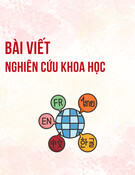
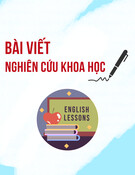



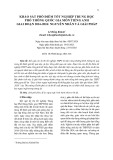
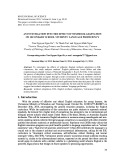
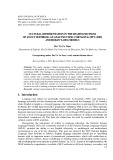
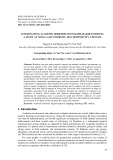



![Từ vựng tiếng Anh về thức ăn và giảm cân [mới nhất, đầy đủ]](https://cdn.tailieu.vn/images/document/thumbnail/2025/20251217/nglinh.diamond@gmail.com/135x160/53091766028543.jpg)


![Tài liệu Từ vựng tiếng Anh Trung cấp [mới nhất]](https://cdn.tailieu.vn/images/document/thumbnail/2025/20250913/nguyentuan250421@gmail.com/135x160/99491757910839.jpg)
![Tài liệu Từ vựng Tiếng Anh theo chủ đề [mới nhất]](https://cdn.tailieu.vn/images/document/thumbnail/2025/20250913/namdhuet@gmail.com/135x160/83251757753810.jpg)



![Tài liệu Từ vựng tiếng Anh cho bé [chuẩn nhất/mới nhất]](https://cdn.tailieu.vn/images/document/thumbnail/2025/20250731/huadaithesang2509@gmail.com/135x160/18631754013896.jpg)




